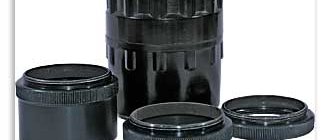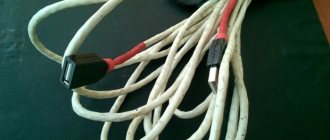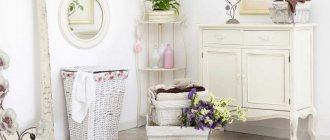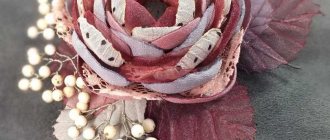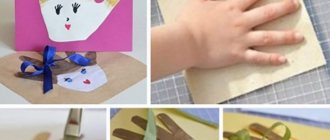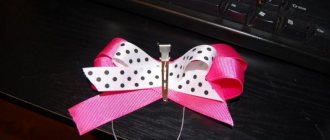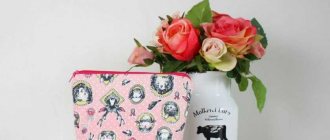Kaleidoscope - you probably had this magic tube in your childhood. Remember that feeling of miracle: an indescribable mixture of delight, surprise and happiness?
A wondrous pattern gives way to another, and they are not repeated - a new pattern arises every time! The world of mirror reflections delights and takes you on a fantastic journey. And the best part is that you can make a kaleidoscope with your own hands for the delight of children.
Optical secret
The main part of the kaleidoscope is three rectangles with a mirror surface . Multiple reflections from their planes create the effect of a fantastic ornament, repeated in different directions. And the slightest rotation of the body gives rise to more and more new patterns.
It is for this ability that the optical device (initially it was not intended for children at all) received its name from the combination of three Greek words kalos + eidos + skopeo, which can be translated as “I look at beautiful views.”
Kaleidoscope at home
Kaleidoscope is one of the favorite fun and toys for children and adults. Today we will tell you how to make it yourself. Let's take a regular paper towel roll as a basis. The simplest materials, a little imagination and effort - and a small miracle will be born before your eyes.
The design of a mirror kaleidoscope at first glance seems complicated. It is difficult to understand how intricate patterns are formed in this small tube, which fill all visible space with themselves and their light. In fact, the kaleidoscope is very simple, and even a child can make this toy on his own.
The process of assembling a kaleidoscope will allow children to feel like scientists in their own laboratory - they will clearly enjoy it. Besides, it's very useful. The child will learn to work with scissors and paper and understand the internal structure of a complex toy. Assembling a cardboard kaleidoscope with your own hands will be a wonderful lesson in needlework, physics and logic.
What do we need?
- paper towel roll
- foil cardboard (inside of juice, milk boxes, etc.)
- three transparent plastic disks with a diameter the size of the sleeve hole (can be cut from plastic bottles, plexiglass, etc.)
- black paper (disk the size of the sleeve hole)
- parchment paper (all the same diameter)
- paper and cardboard for decoration
- shiny filler (beads, rhinestones, sequins, small beads)
- scotch
- glue
Progress
First, let's start with the “stuffing” of our kaleidoscope. If you don't have foil cardboard, use regular cooking foil. Just stick it to the cardboard using a glue stick. The length of the shiny cardboard surface should be 2-3 cm shorter than the sleeve (we will place the patterned chamber in it).
Bend the cardboard into an equilateral triangle so that the triangular tube fits evenly into the sleeve. It should not hang loose or fit too tightly. Glue it with tape and place it in the future kaleidoscope. Place the first transparent disk (without a hole) on top.
We pour our decor into the toy (on a transparent disk). Mix beads, large sparkles and other beautiful bright small details. Cover the container with a circle of parchment paper and a second plastic circle. Secure the structure with tape and glue.
At the other end of the pipe we place one transparent solid disk and a black disk with a hole.
Then the external decoration of the craft is done. Wrap the sleeve in pretty paper, paint it, or glue something you like to it. Ready!
The jewelry container is easy to open and refill. Try different combinations of decorative elements - each time you will see a variety of patterns. It’s simply impossible to tear yourself away from this toy! Be sure to try making a kaleidoscope - your child will be delighted with it.
Not just a toy
The invention of the English physicist Brewster was called differently: kaleidoscope, chromatoscope, shift, patternmaker, motley. It began its triumphal march back in 1817, and has been attracting the attention of people of all ages for more than a century.
And today, many adults can use the services of this extraordinary psychotherapist: by looking at the scattering of alternating ornaments, at any age they will be able to not only remember childhood emotions, but also relieve stress and calm frayed nerves. A pattern maker can also suggest a variety of creative ideas.
Manufacturing procedure
Creating a kaleidoscope does not require complex tools. Here's what you'll need:
- Scissors, tape, glue, pencil and ruler. For now, let’s put aside the decorative blanks: colored and white paper. To decorate the craft, you can use beautiful wrapping sheets and fabric with an interesting print or texture.
- The body of the toy is made from a variety of materials. You can use: a cylindrical body from chips, a cardboard or plastic tube, towel rolls.
- To create isolated chambers inside the product, you will need two transparent and one matte disk. Their size should be equal to the cross section of the tube. What will be useful for this purpose? Glass, transparent plastic cases. The fourth disk should have a peep hole.
- Pieces of multi-colored glass (classic), small beads, beads, sequins and even transparent stones can be suitable for forming patterns - you can take what you like. To get a better picture, it is advisable to select components of different sizes that differ in mass.
- Three mirror stripes.
When starting this work, involve your child in it. It will be interesting for both the baby, because this is a new experience, and for you, because it’s so great to bring back the feeling of miracle from childhood!
A few more tips:
- You can take not mirror cardboard, but, say, small mirrors or computer disks. You can fasten them with paper strips or adhesive tape. You need to be careful with such a kaleidoscope if you give it to small children so that they don’t drop it.
- Beads or beads can be replaced with pieces of multi-colored plastic, for example, from broken toys, or fragments of colored plastic bottles.
We also suggest watching a video on how to make a kaleidoscope with your own hands:
Constructing a kaleidoscope
A mirror triangular prism is the main part of a kaleidoscope. The very first thing we will do is to start creating the heart of the optical device, and accuracy and precision are simply necessary here .
- It is not difficult to calculate the dimensions of a mirror prism: we place the blank for the body vertically, trace the base and get a circle. We inscribe an equilateral triangle into it. The width of the mirror strips will be equal to the length of the side of the drawn figure. The rectangular reflectors are only 2 cm shorter than the tube.
- Now we connect them together with their long sides so that the mirror surface is inside. We fix the structure with tape and get a triangular prism made by ourselves. For reliability, you can also treat the joints with hot glue.
- We insert the prism into the body so that at one end it is flush with the edges of the tube. Then, on the opposite edge, it will be possible to create an isolated chamber for small items prepared in advance - remember, we have already selected them.
- First, place a transparent disk on the prism. You can use hot glue around the perimeter to seal it. We insert a cardboard sleeve on top - this will be the height of the camera. It directly depends on the size of our colored fragments.
- When the glue dries, add bright little things. It is important not to overdo it: in order for the picture to be bright and filled with light, the layer of multi-colored glass should not be thick.
- The next step is to cover the camera with a matte disc. By the way, you can experiment: try taking a transparent one. It can be glued to the body with glue, but tape will also work.
- In fact, you can check the operation of the device now. Point it at the light source and look into the still open part of the kaleidoscope. There is not enough blue or red - you can adjust the contents of the camera.
- Now we cover the section of the tube with a transparent round piece, and glue another one on top, with a hole in the middle. It can be cut from a single-sided CD. By the way, the peephole will be very neat.
How to make a kaleidoscope from cardboard
The crystal scatterings of a kaleidoscope are just a few bright pieces of glass reflected in the mirror many, many times, but they create an amazing impression.
To make a kaleidoscope you will need:
- empty paper towel reel (length - 23 cm, diameter - 5.3 cm),
- cardboard with foil (mirror substitute),
- colored glass, transparent stones, beads or beads,
- three transparent plastic disks,
- scotch,
- black paper,
- glue stick,
- parchment and colored paper.
Let's get started!
1. Take cardboard with foil and glue it into a triangular prism with the shiny side facing inward. You can use milk or juice cartons. The width of each strip is 4.3 cm, the length is 21 cm. Secure the prism with tape.
2. Place the prism in the cardboard reel. The prism should be several centimeters shorter than the tube and not reach the end.
3. Cut out two transparent disks with a diameter of 5.3 cm from plastic. Glue parchment paper onto one of them - it should be matte.
4. Insert the transparent disk into the reel and secure it with tape at the end of the prism.
5. Place glass and shiny pebbles on a transparent disk. You don’t need to put a lot of them, otherwise they won’t be able to move.
6. Attach the matte disc to the top of the reel using tape.
Well, how did it work out?
7. At the other end of the kaleidoscope, stick a piece of black cardboard with a round hole in the middle.
6. Decorate the top of the kaleidoscope at your discretion.
Wonderful! The kaleidoscope is ready to delight the eye with an amazing lace of colors and images.
Interesting! The inventor of the kaleidoscope is the Scottish physicist Sir David Brewster. A simple but fascinating toy at first glance was invented by a scientist in 1816. But the strangest thing is that it happened completely by accident - Brewster initially planned to make a scientific optical instrument.
None of the discoveries of the famous physicist brought him such popularity and fame as the bright kaleidoscope trinket. But the scientist was unable to make money from it - even before the patent was issued, there were smart people who quickly mastered the technology for making the toy. This is how a kaleidoscope appeared in every store.

